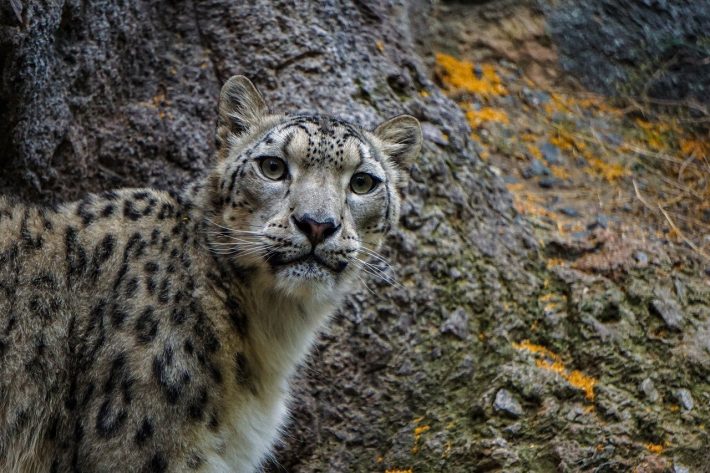Snow Leopard Trust press release.
New research published in Ecological Evidence and Solutions explores the ethical and legal responsibilities of capturing humans on wildlife camera traps.

Camera traps set out for wildlife research often capture images of people including local community members and suspected poachers. A new article, published today in the peer-reviewed scientific journal Ecological Evidence and Solutions, calls for respecting the privacy of people photographed by remote cameras, and also lays out principles for fulfilling the public responsibility of reporting illegal activity caught on wildlife cameras.
Camera trapping is a widely employed tool in wildlife research and monitoring, used to estimate animal abundances, understand animal movement, assess species richness, and understand animal behaviour. In addition to images of wild animals, research cameras often record human images, inadvertently capturing behaviours ranging from innocuous actions to potentially serious crimes.
In certain cases, there are legal requirements to hand over such images to law enforcement agencies. However, if human images are not managed appropriately, it can lead to ethical blunders. Additionally, there can be legal issues related to the breach of individual privacy, freedom of movement and personal autonomy under national and local laws.
"As researchers, we often face both legal and ethical dilemmas when faced with human images caught by camera traps. On the one hand, it is important to respect the privacy of the individuals in these photos, while on the other, there is a larger public duty to report illegal activity", says Dr Koustubh Sharma, senior scientist with the International Snow Leopard Trust, and lead author of the article.
Navigating these issues can be a tightrope walk for researchers.
In their article addressing these dilemmas, Sharma and his co-authors propose a series of precautions researchers can take when planning their study and principles they can follow when handling images of people. They particularly emphasize the importance of respecting the rights and interests of local communities.
"Living with wildlife comes at a cost, both direct and indirect, which is usually borne by local people living near key biodiversity areas. Wildlife conservation efforts have often marginalized these local communities - and if poorly handled, camera trap images of humans can further alienate or harm people", says Dr Charu Mishra, Executive Director of the Snow Leopard Trust and co-author.
"We strongly believe in empowering local communities for conservation. Our article, which builds on years of hands-on experience and knowledge of practicing field researchers, social scientists, and legal minds, is a step towards an ethical code of conduct for researchers and wildlife managers working with research cameras. We hope that it will help improve the practice of camera trapping worldwide".
The paper identifies seven basic concepts and principles:
- Permission
Camera-trapping must be undertaken only after obtaining all necessary permissions from government agencies, and, where appropriate, local communities in areas where they have jurisdiction.
- Purpose Limitation
The purpose of setting up camera traps, and what is intended with the data, should be clearly identified in the project proposal, permission request letter and/or other documentation.
- Disclosure
Where local communities may use public lands or protected areas, they need to be made aware in advance that camera trapping is being conducted and the purpose of setting up camera traps communicated clearly.
- Legality
Researchers must make themselves aware of the applicable laws of the land and ensure that the laws are respected while conducting camera trapping. Camera trap photos, if used against individuals engaged in illegal activities must follow a priori disclosure of purpose.
- Privacy
As a rule of thumb, the privacy of individuals inadvertently photographed by camera traps needs to be protected.
- Participation
The voluntary participation of stakeholders in the process of camera trapping should be sought, and co-creating research questions with local communities considered.
- Sharing
The technology of camera traps, and their capabilities and limitations, should be explained to local communities, and resulting information and credit shared.
The approach proposed in the article evolves from the International Snow Leopard Trust's framework for ethically and respectfully engaging with local communities for nature conservation. Formally known as PARTNERS Principles, this framework has been adopted by researchers and conservation practitioners around the world through an extensive training program.
"What we do for snow leopards and biodiversity matters, but how we do it matters ever more", says Charu Mishra, underlining the thinking behind these approaches.
The PARTNERS Principles are also increasingly employed through the Global Snow Leopard & Ecosystem Protection Program (GSLEP), an intergovernmental alliance of all 12 snow leopard range countries.
"The GSLEP program is driving an ambitious program on Population Assessment of the World's Snow Leopards (PAWS), which aims to reliably estimate the global population of snow leopards in the wild. Camera trapping is a key tool to estimate populations of these elusive cats. We will encourage the diverse teams working on PAWS to follow these principles", Koustubh Sharma says.
You can read the full article for free here:
https://besjournals.onlinelibrary.wiley.com/doi/10.1002/2688-8319.12033






